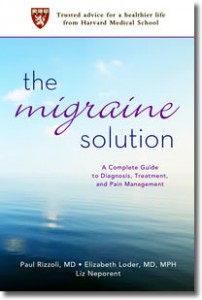This blog post is authored by guest writer Paul Rizzoli, MD, headache specialist, Clinical Director of the John R. Graham Headache Center at Faulkner Hospital in Boston, and Assistant Professor of Neurology at Harvard Medical School.
When you’re prone to migraines you’re forced to think through whether or not something you do will invite a headache into your life. Exercise is definitely one of those things. Should you skip a workout because you feel a migraine coming on? Or is it better to push through in the hopes a little sweat will make you feel better?
Most headache specialists recommend exercise and an increase an overall physical activity to their patients. However, to date, there’s skimpy evidence to support the idea that working out actually guards against migraine attacks. A few studies have shown that taking regular exercise can reduce the severity, though not the number of headaches.
In one recent study people with migraines were randomly assigned to one of three groups: One group followed a regular exercise routine under the direction of a personal trainer; the second group received training in relaxation; and the third group took a common migraine prevention medication. After 12 weeks all of the groups experienced a similar decline in the frequency of headaches suggesting that exercise can be just as effective as relaxation and medication in cutting down on migraine frequency. I’d like to see more and larger studies confirm this finding however.
In the meantime I rely on the fact that a number of my patients have told me that exercise seems to help reduce migraine frequency and severity. Many say they get the most noticeable improvements when their workouts are hard-core and high intensity. I haven’t seen any scientific evidence to back up that particular observation but since so many of my patients say that this sort of exercise gives them some relief, I think this is an idea worth consideration.
On the other hand, I’ve also had a few patients tell me that high intensity exercise exacerbates their migraine problems. Exercise-induced headaches are a well-known problem. I suspect that in some people these headaches are due to dehydration or an increase in heart rate and blood pressure — but for the most part people with migraines should be able to exercise at a moderate intensity without making matters worse. This is a case where individual responses probably make the difference.
I certainly encourage all of my patients to exercise on a regular basis. I believe that strengthening your heart and lungs and keeping your weight down can only work in your favor when trying to overcome any health issue, migraines included. My recommendation is to get a minimum of 30 minutes of physical activity most days of the week. You might also want to experiment with different activities, different exercise intensities and even different timing of workouts to see if something specifically clicks with you and helps you feel better.
Want to know more? Check out the brand new Harvard Medical School’s The Migraine Solution written by me, Elizabeth Loder, MD and Liz Neporent.


